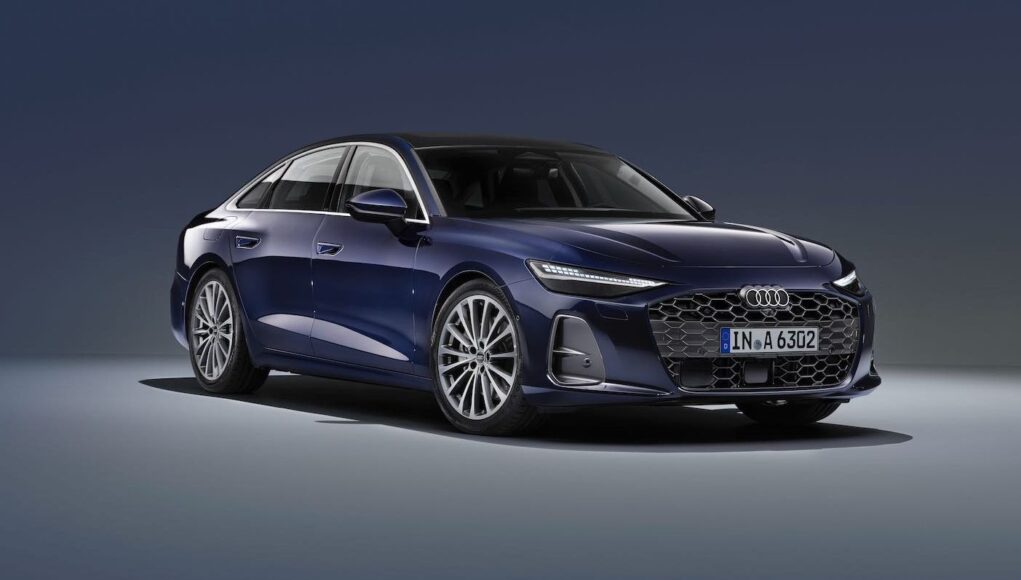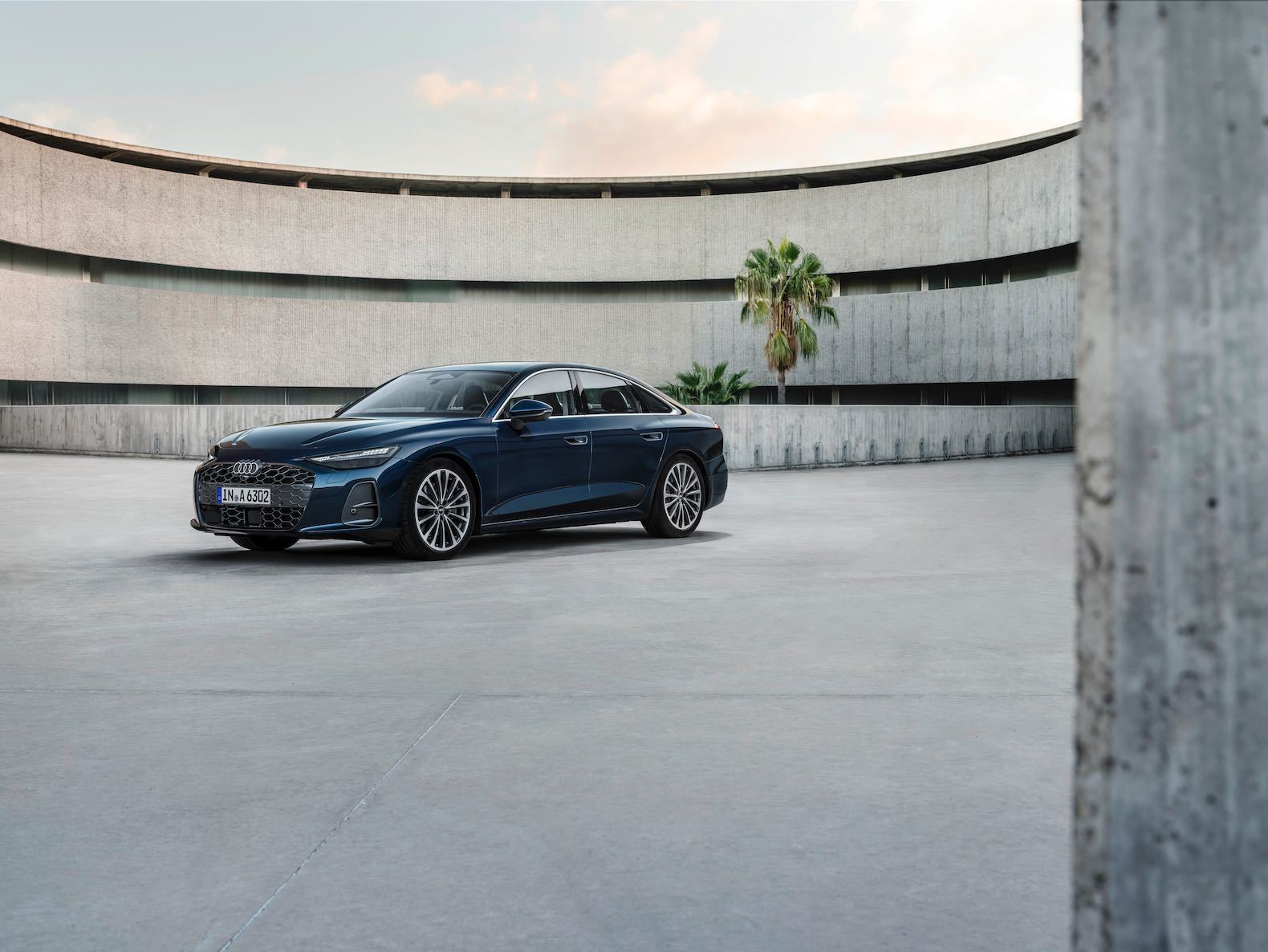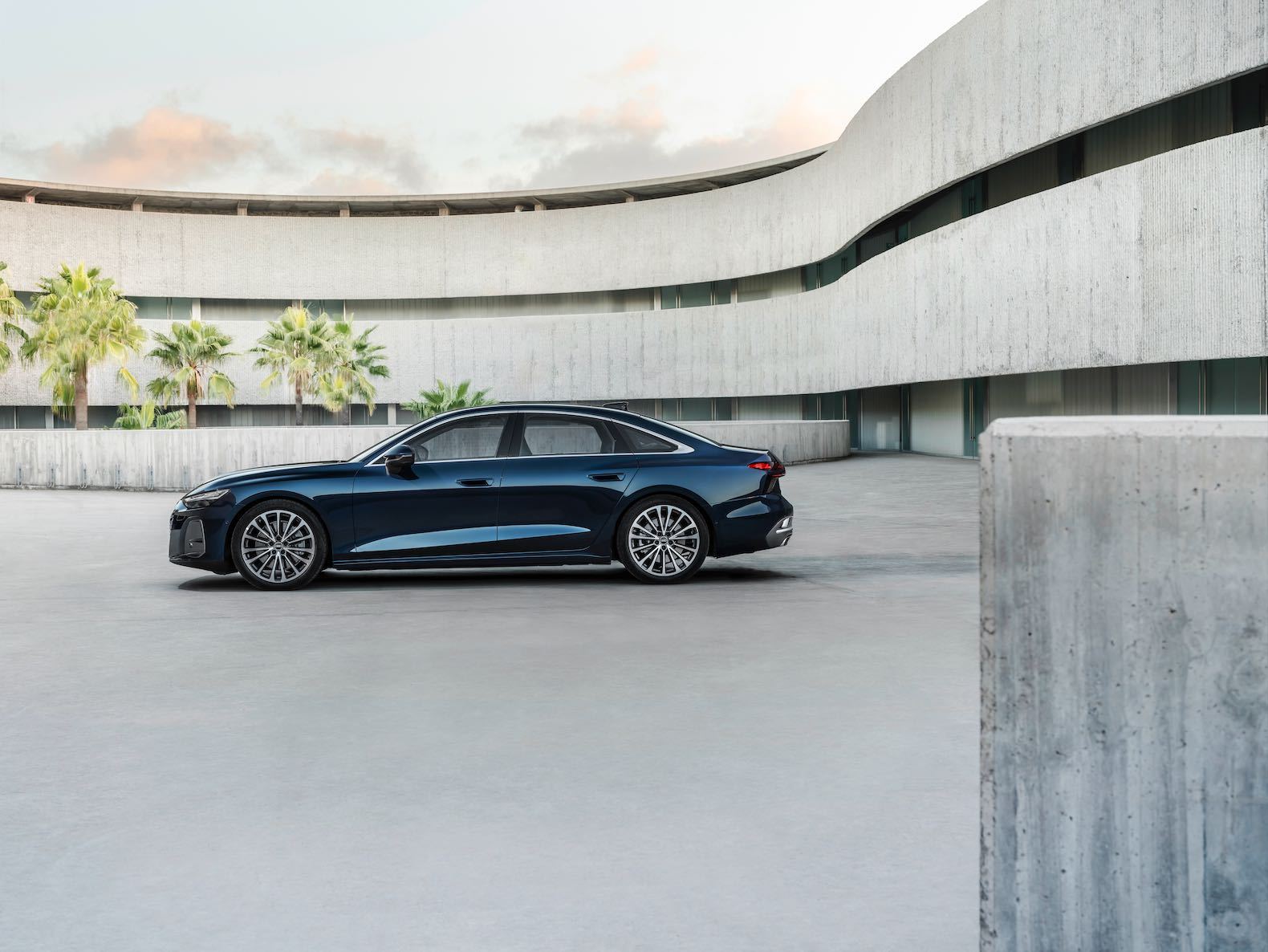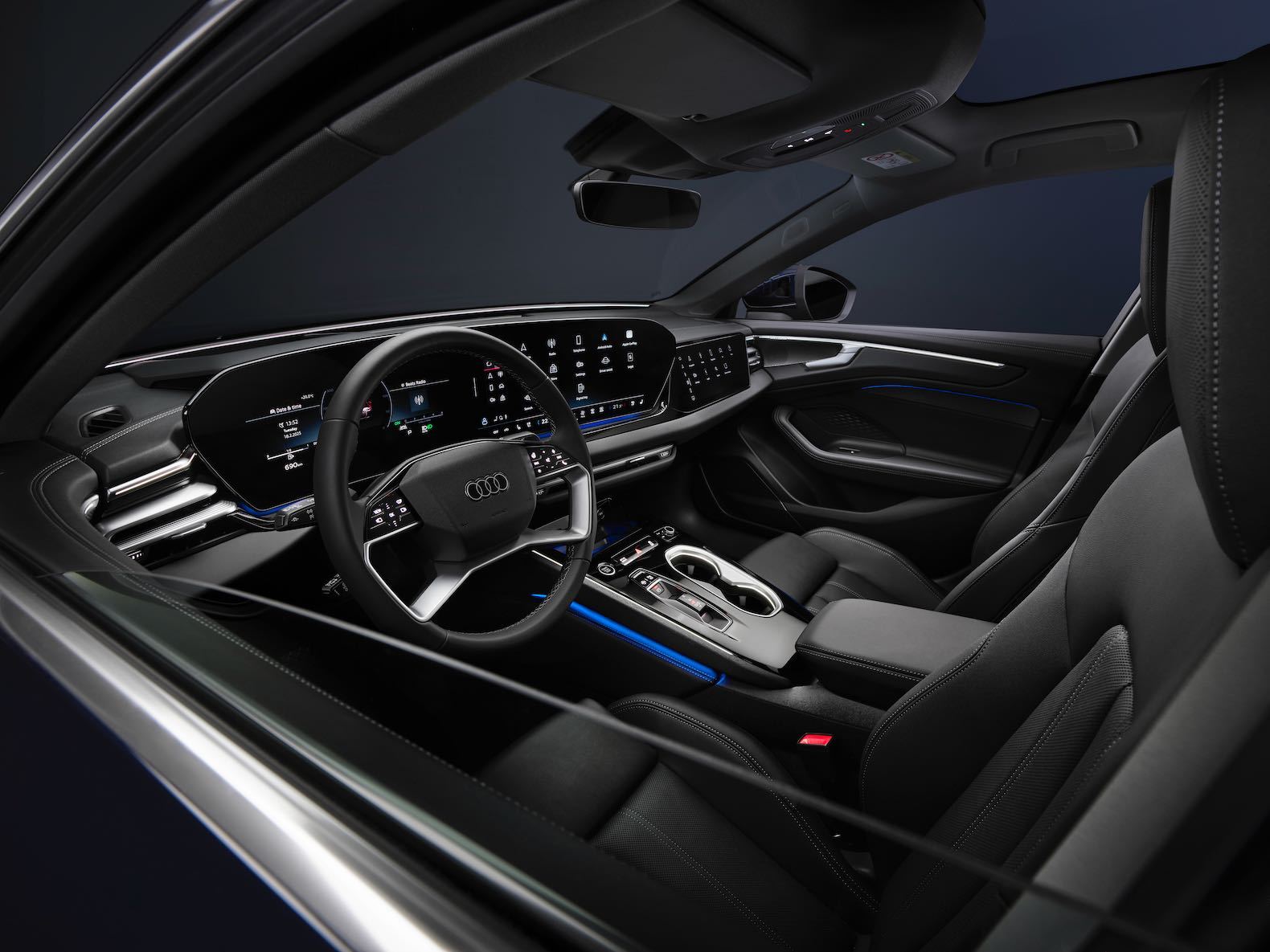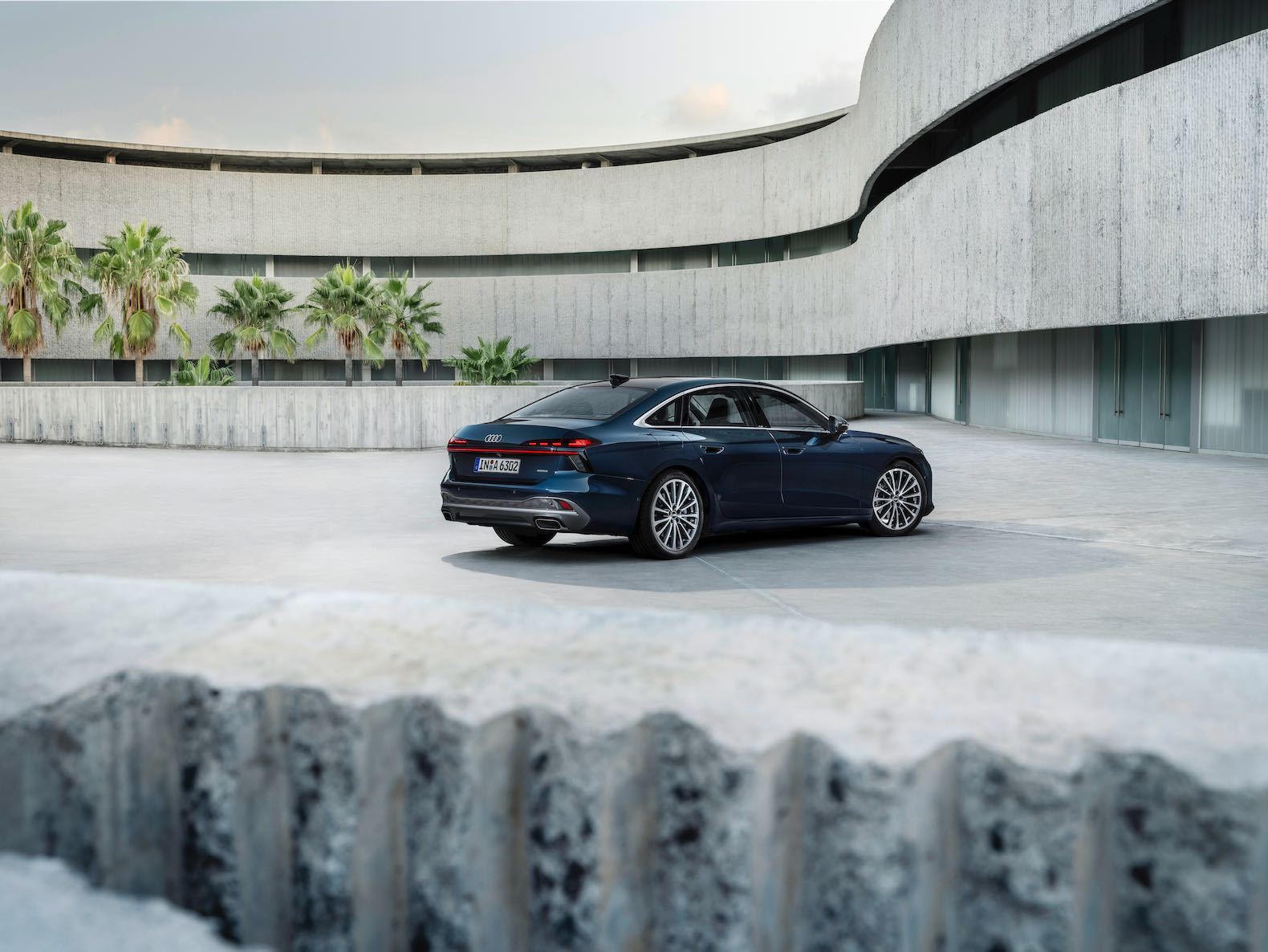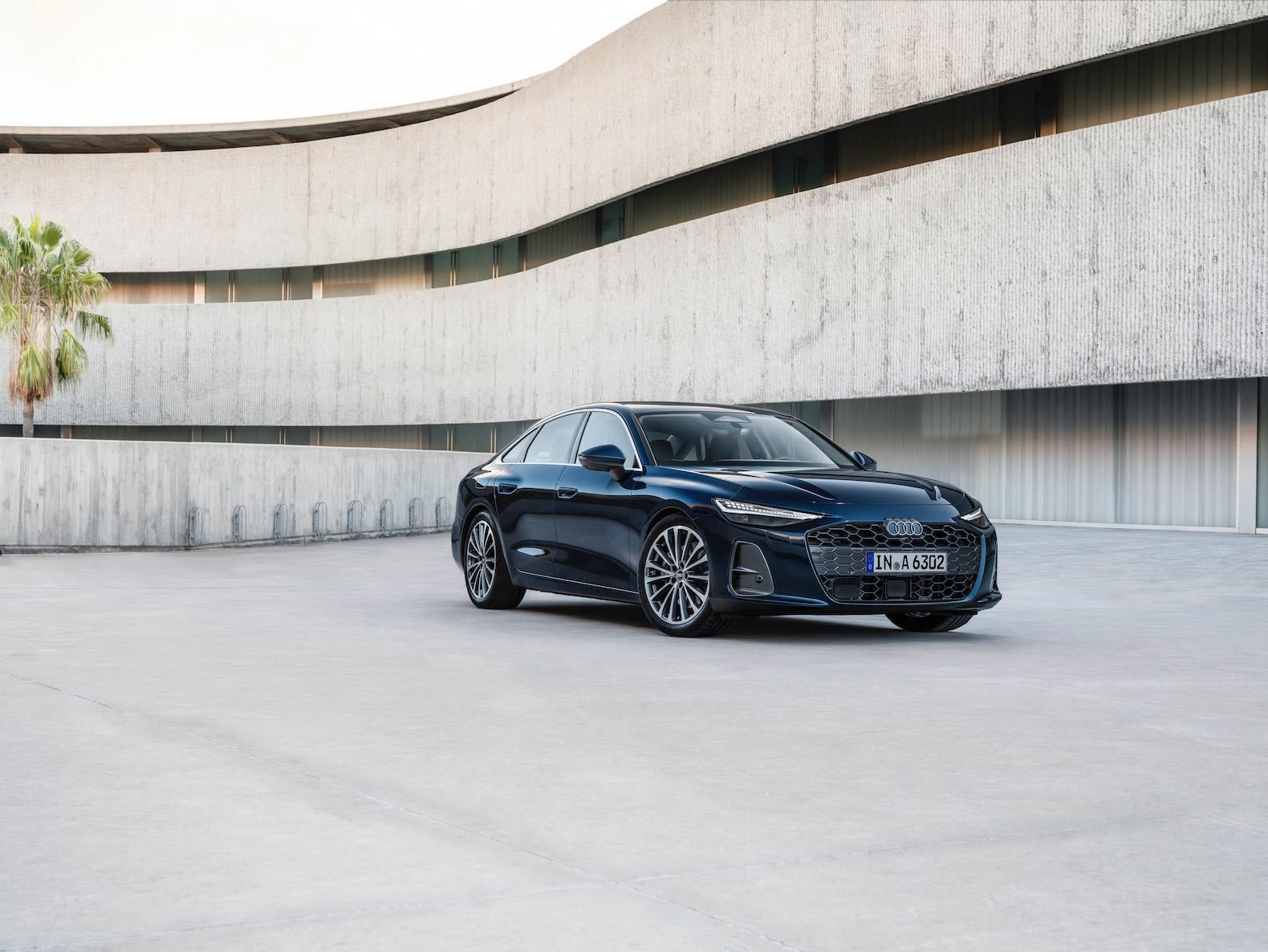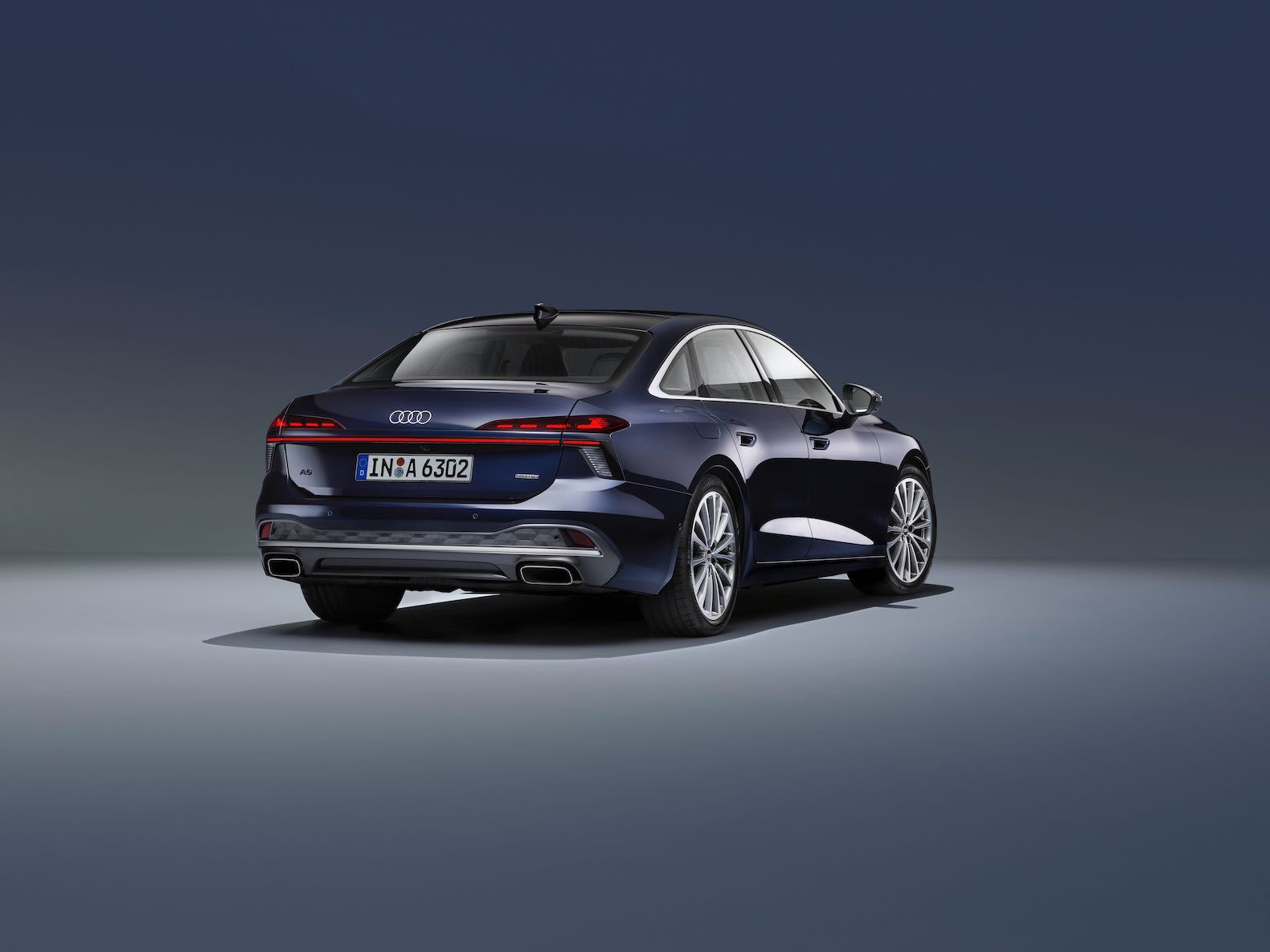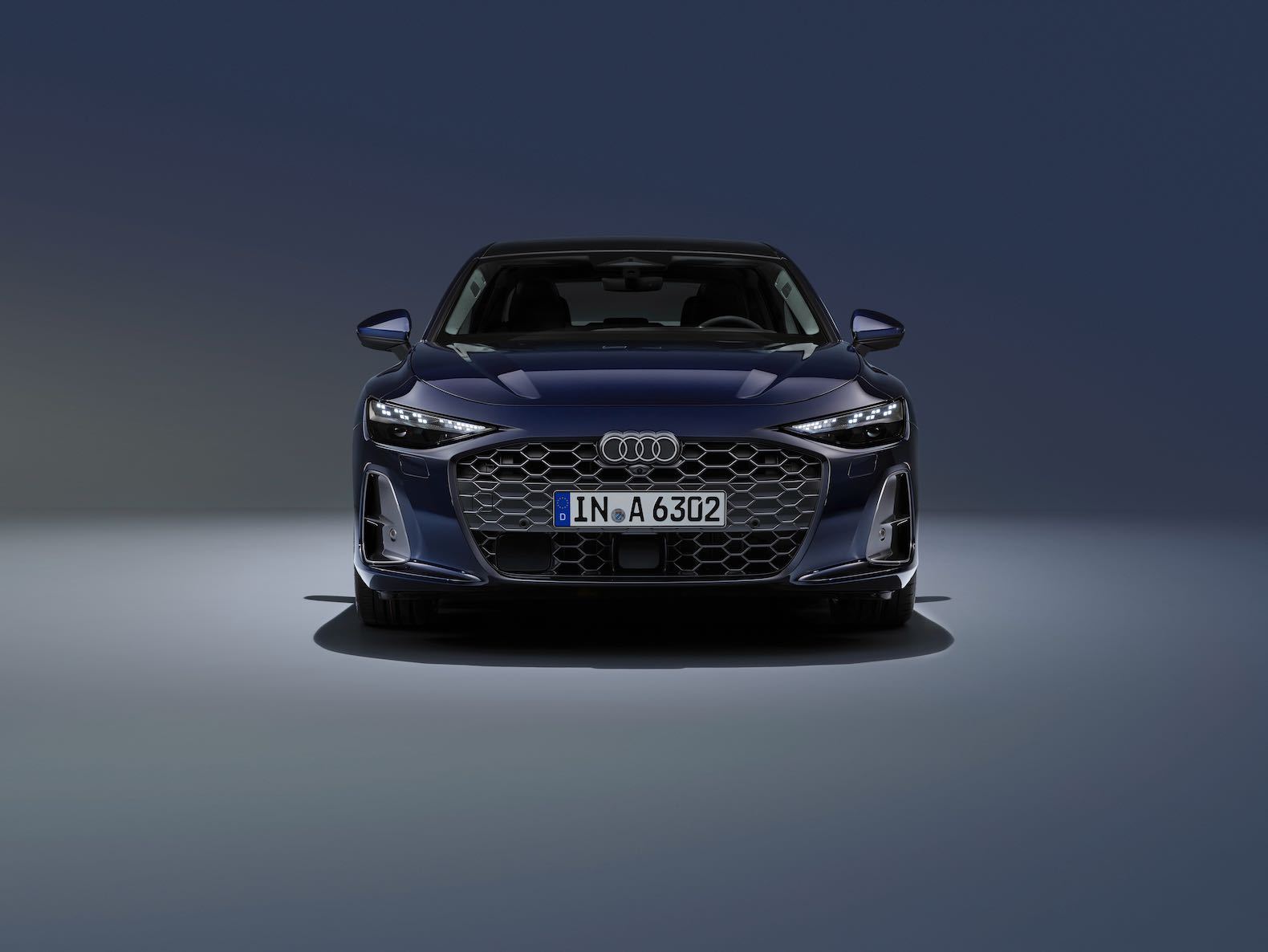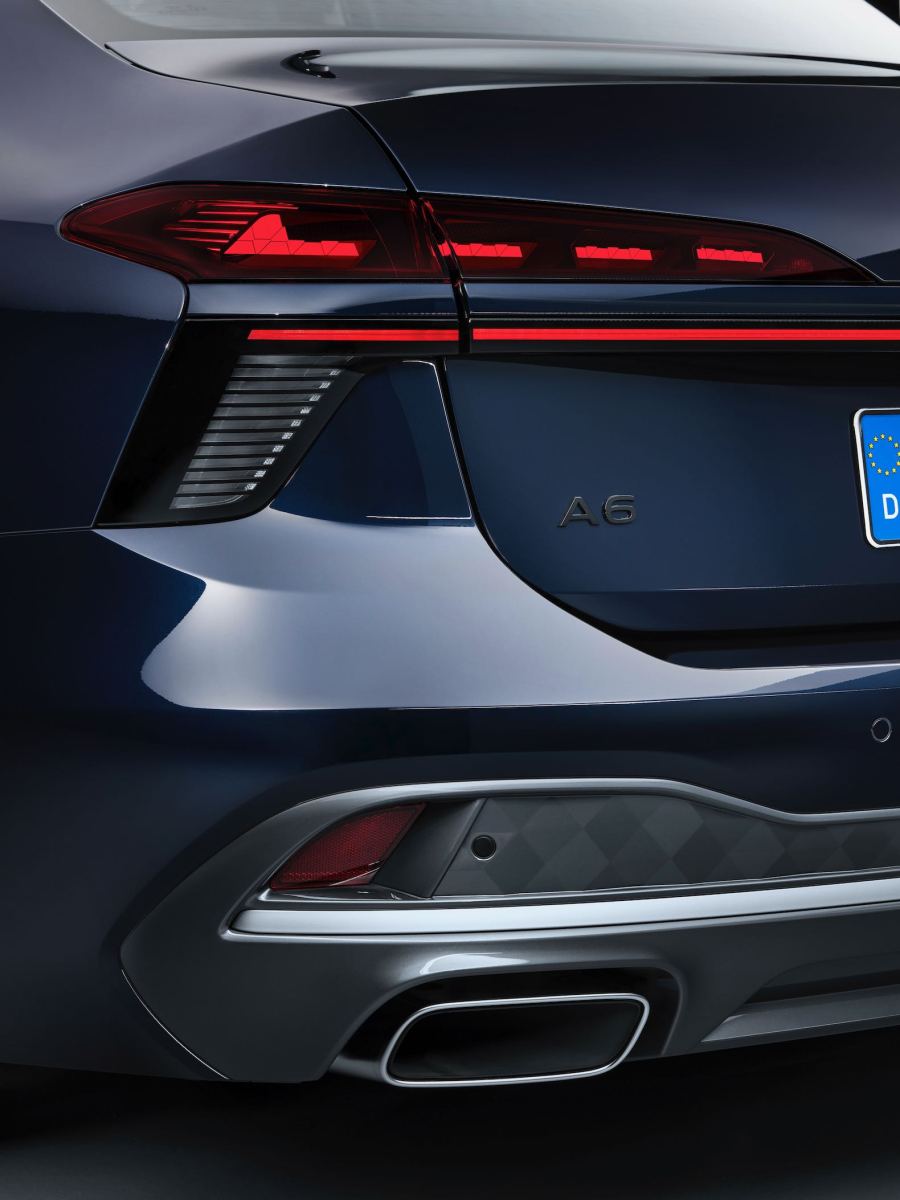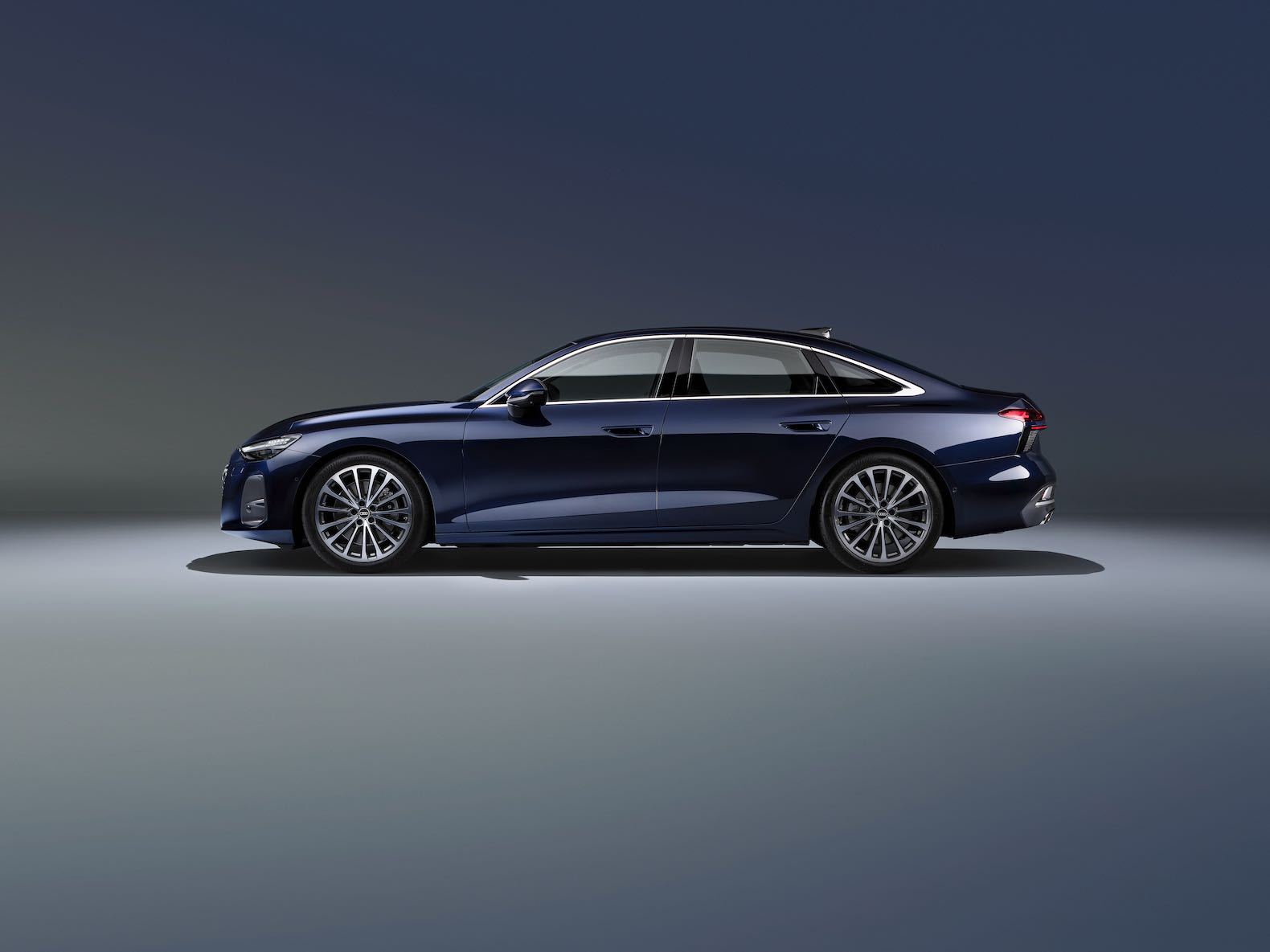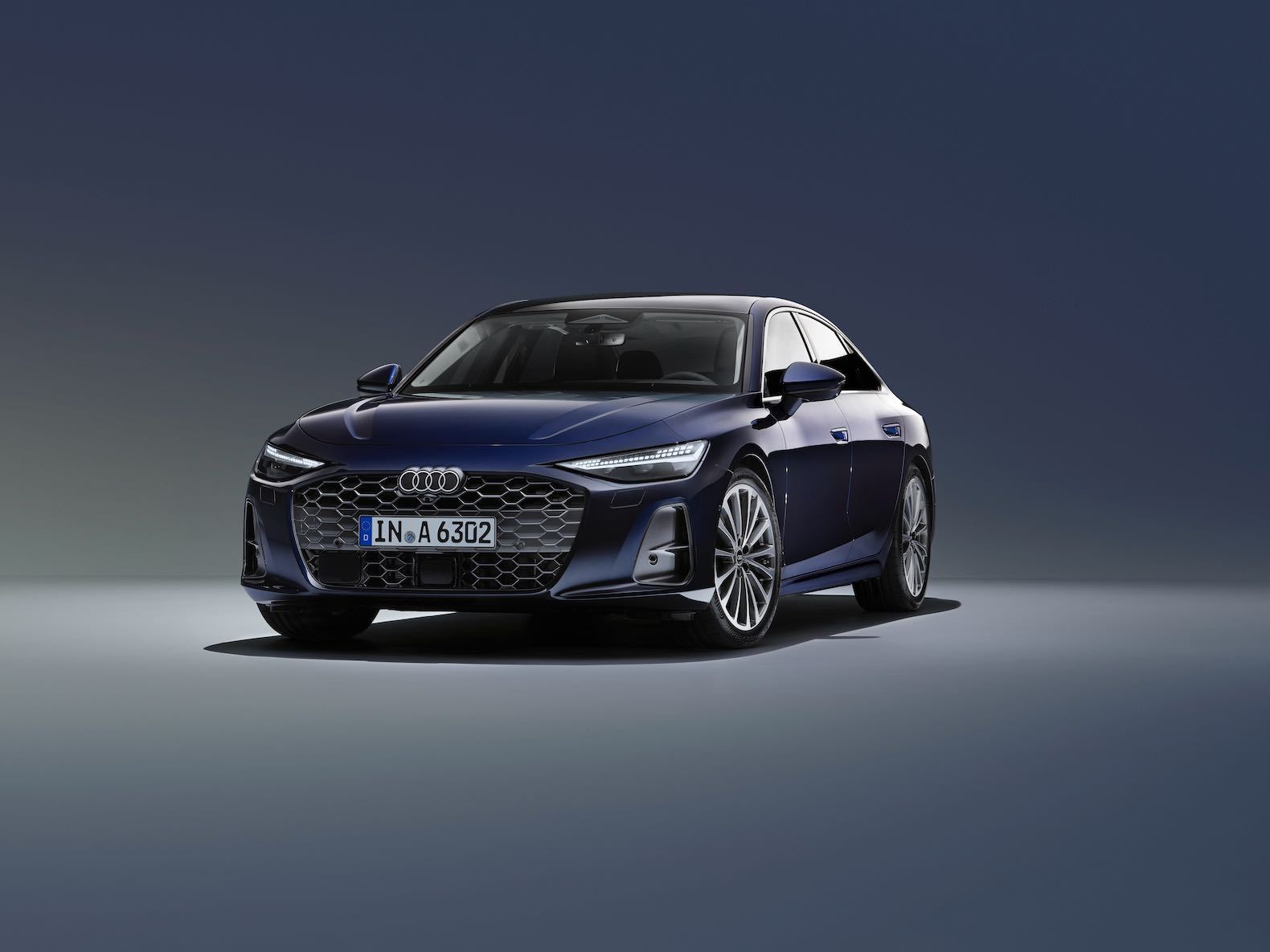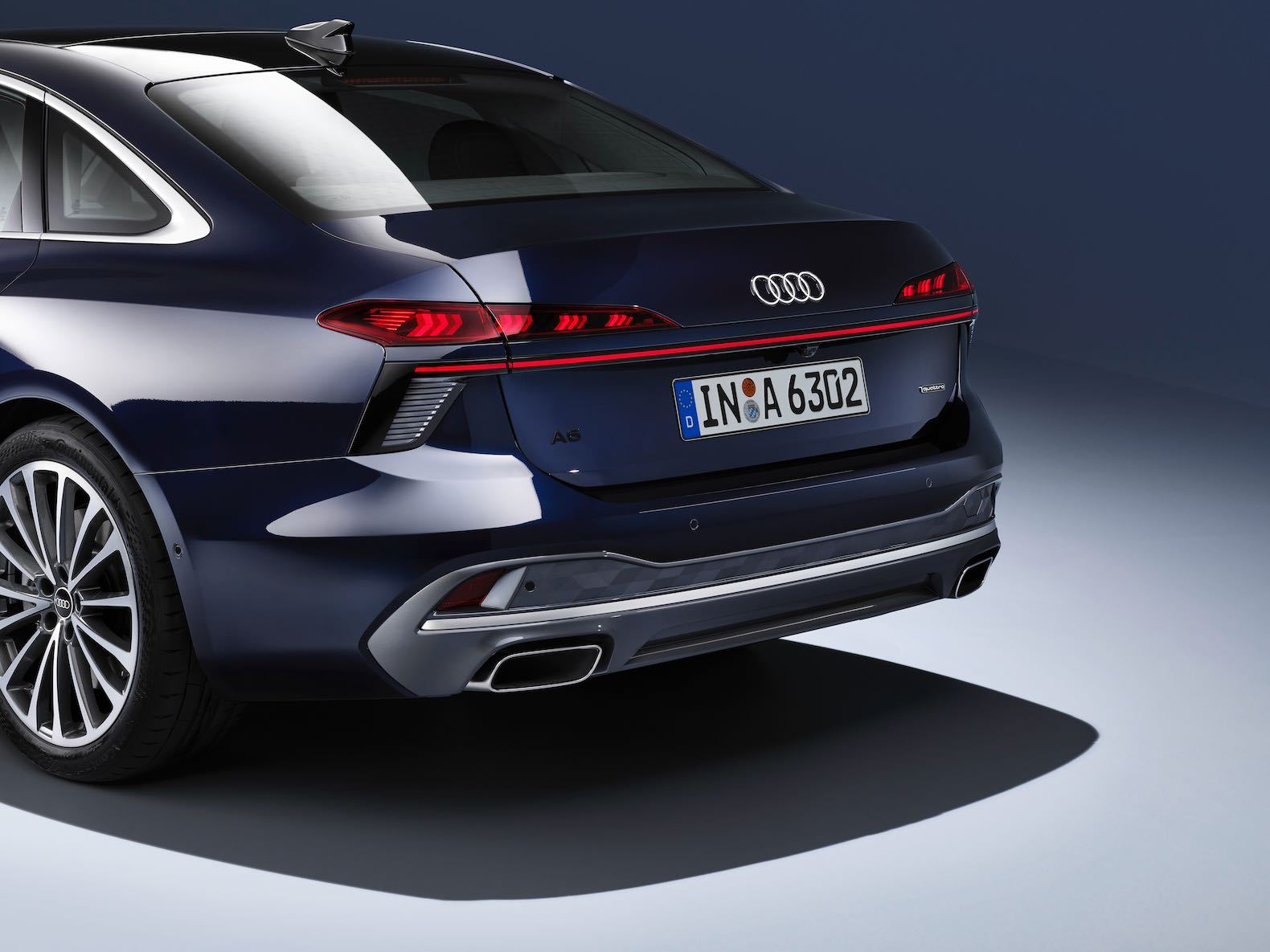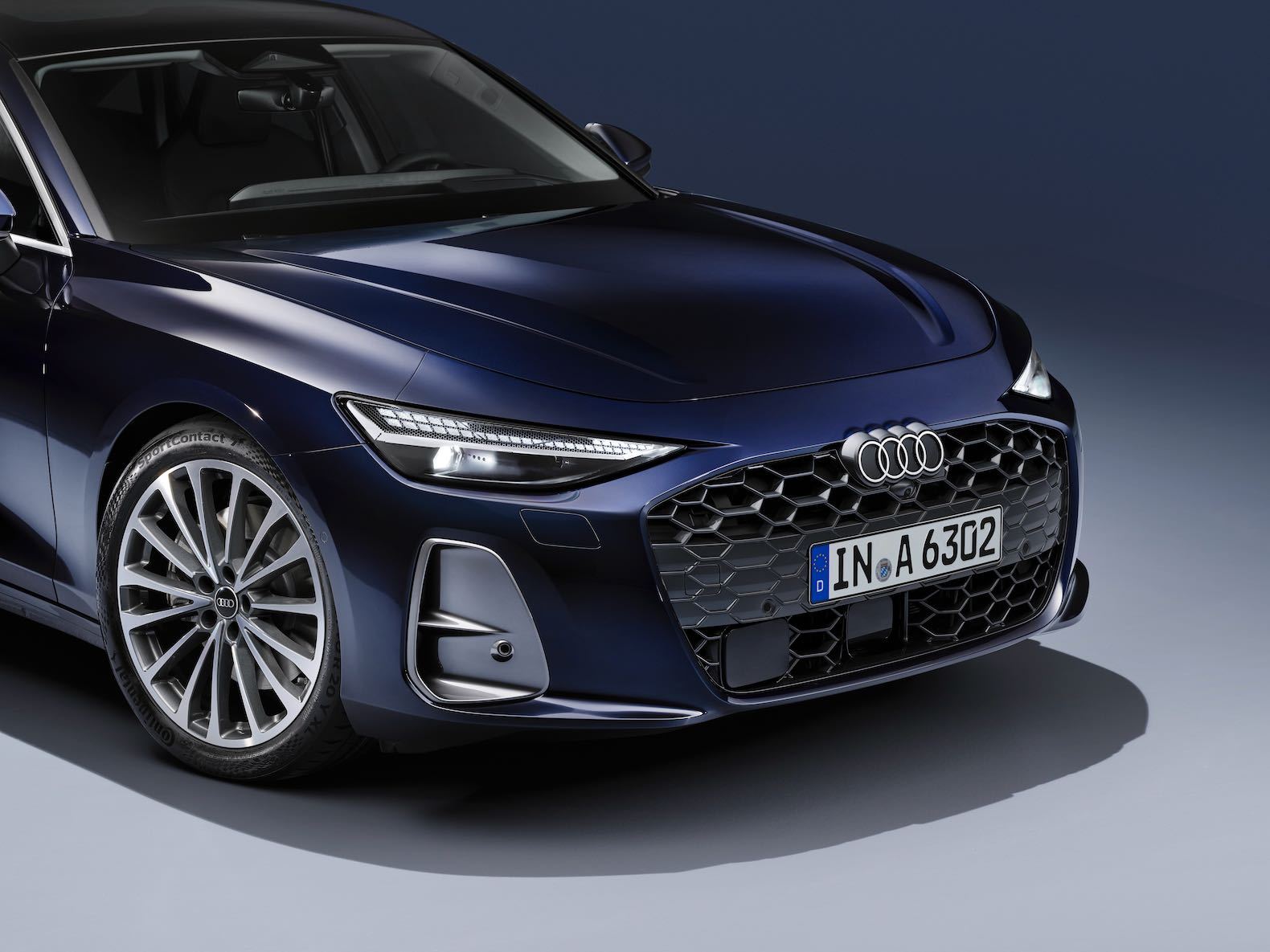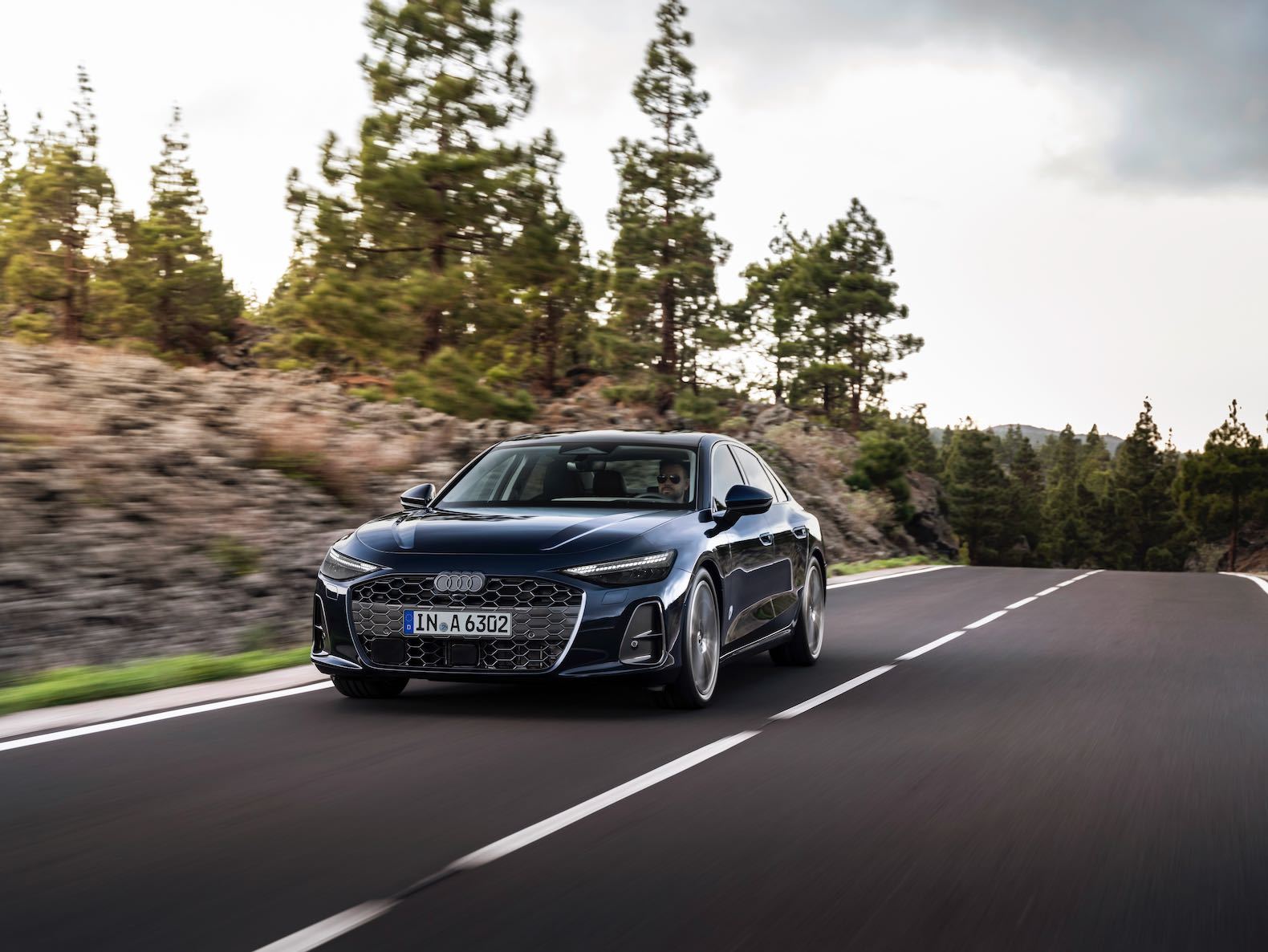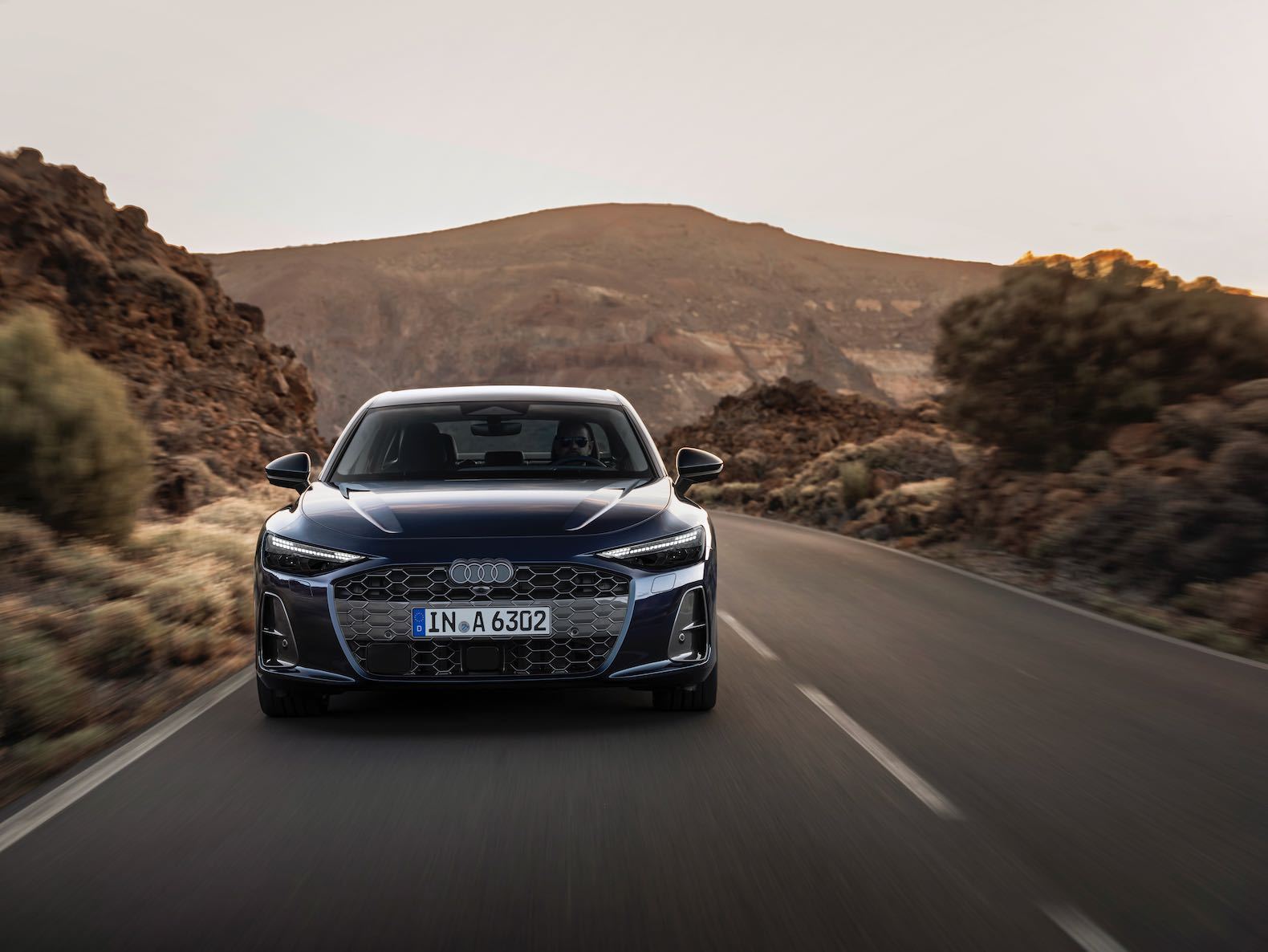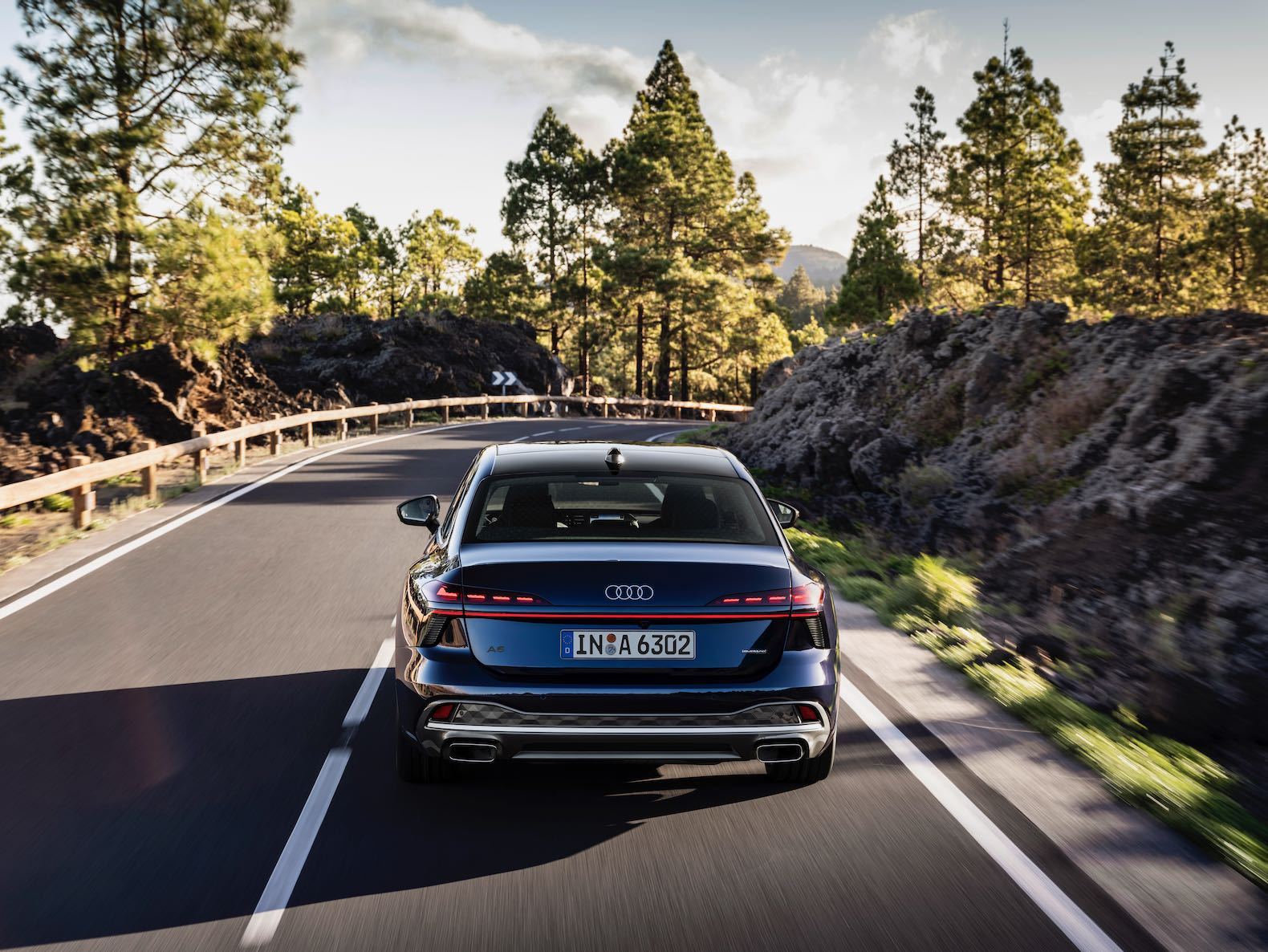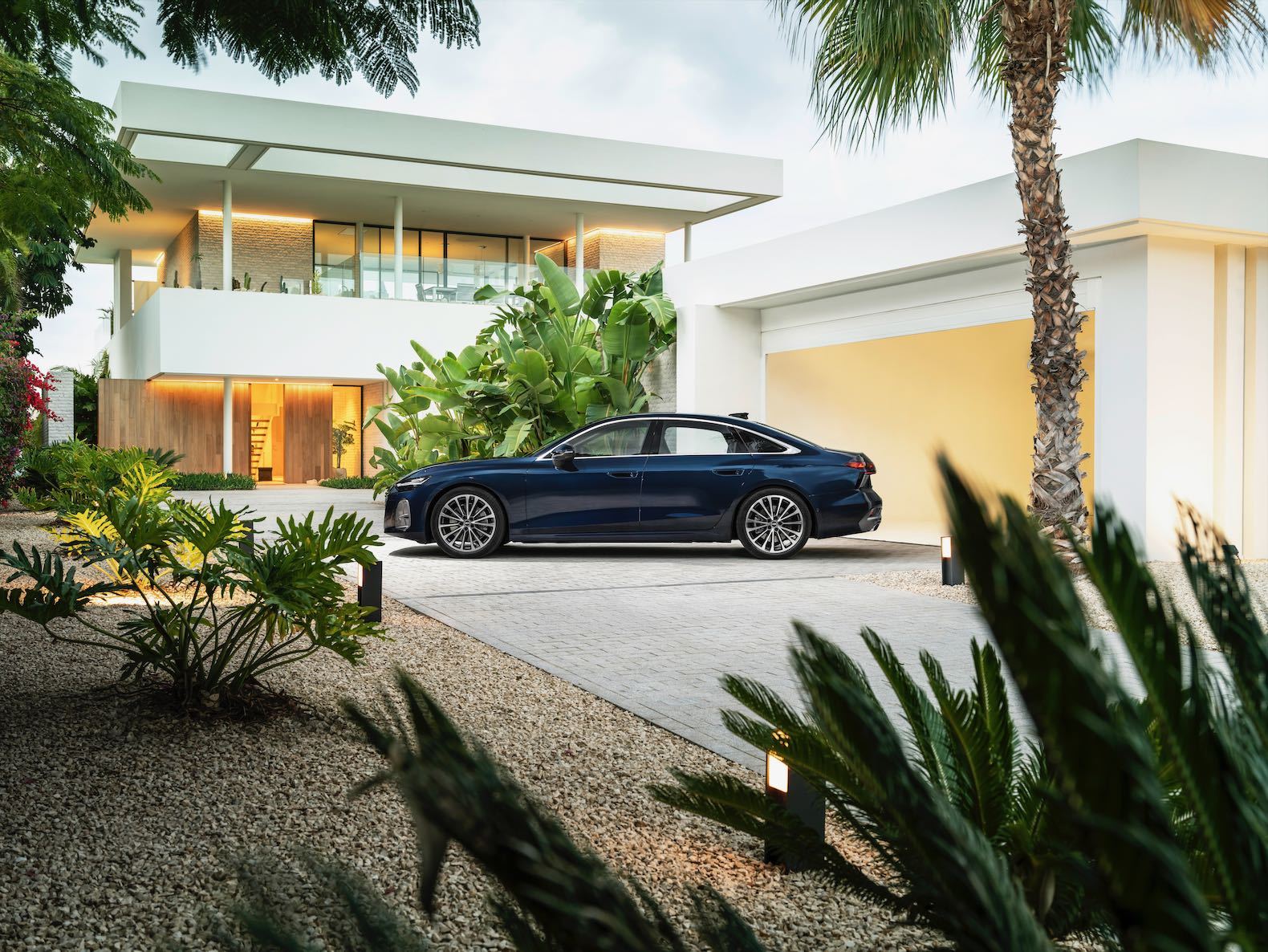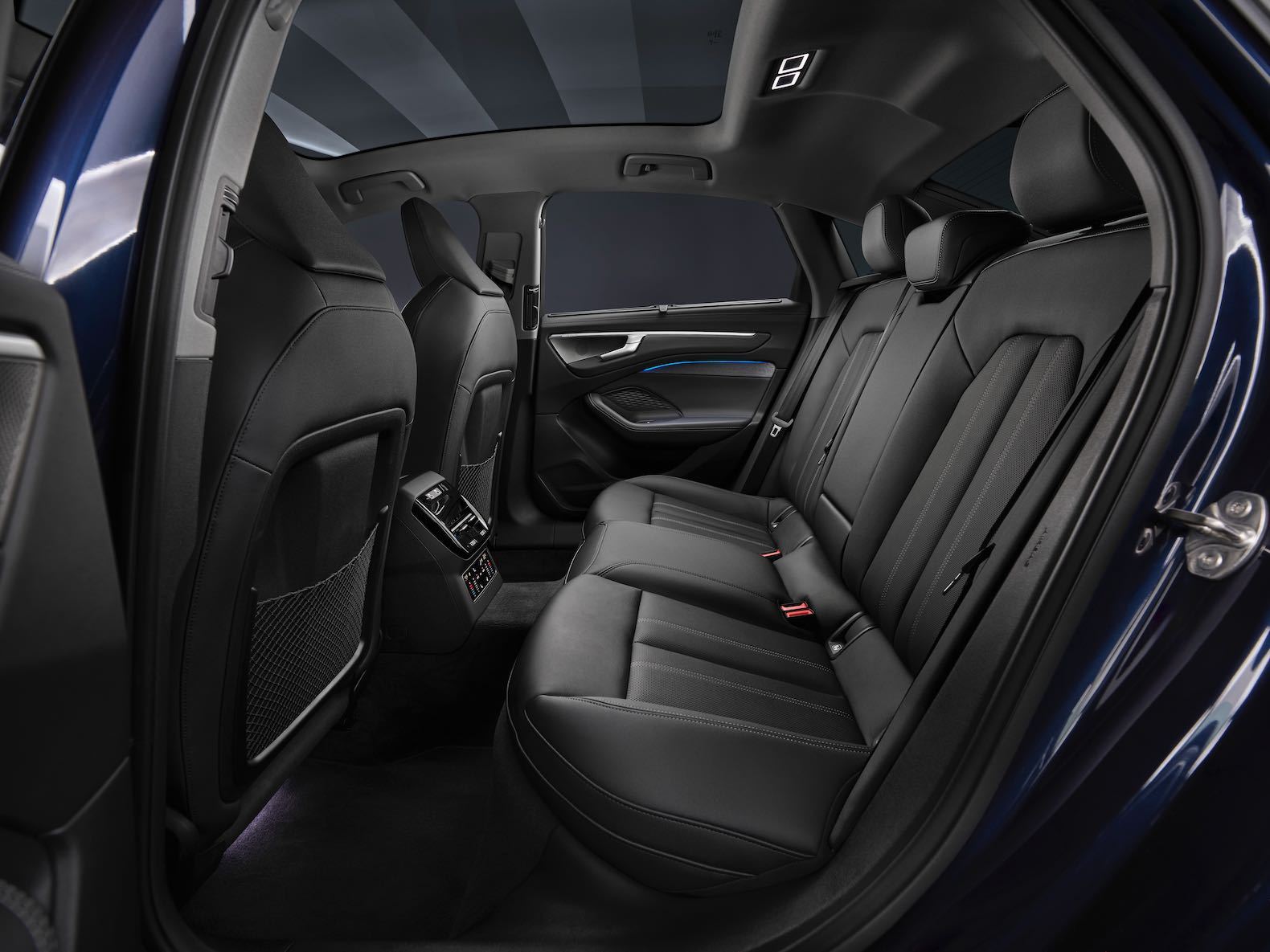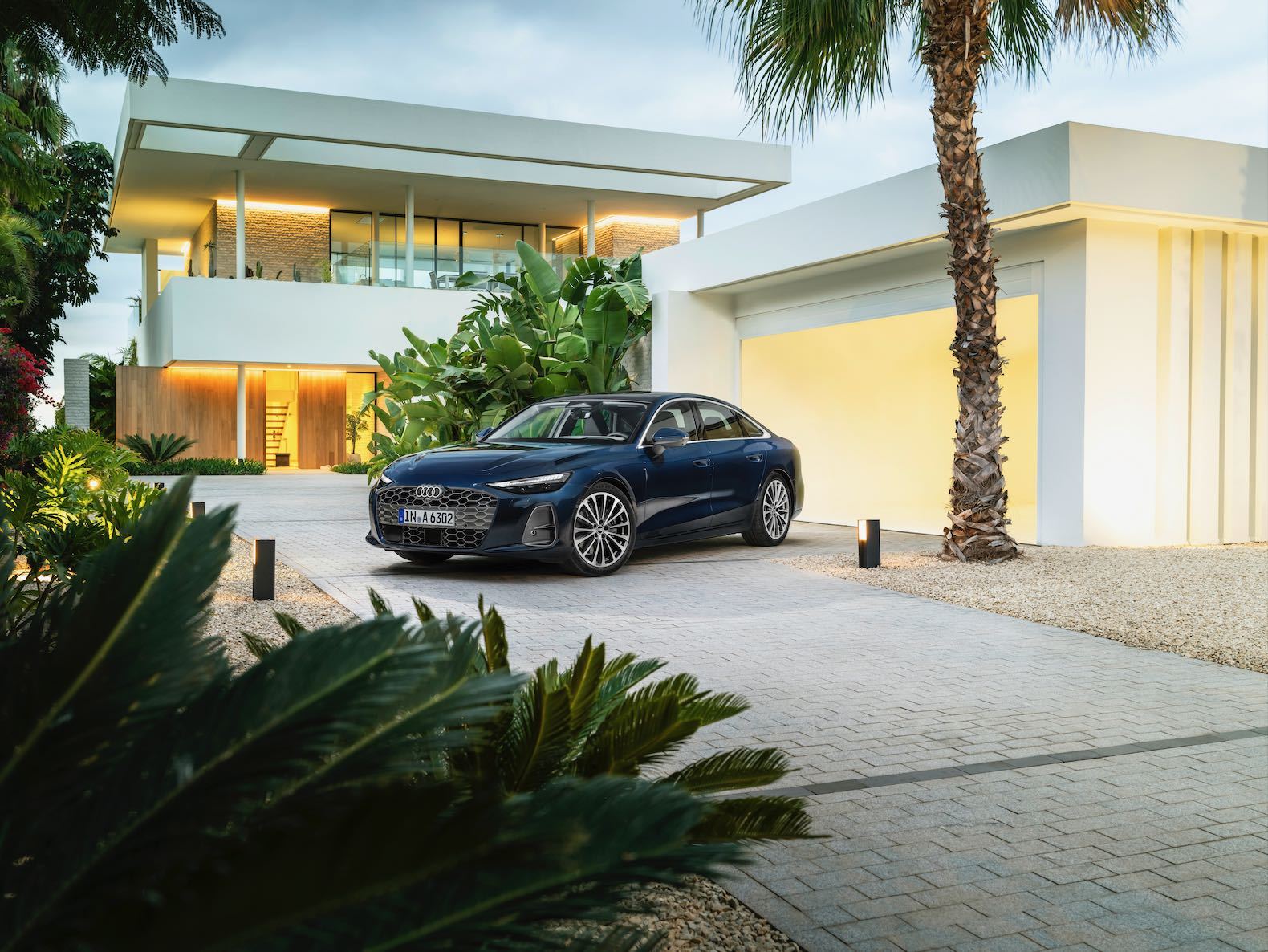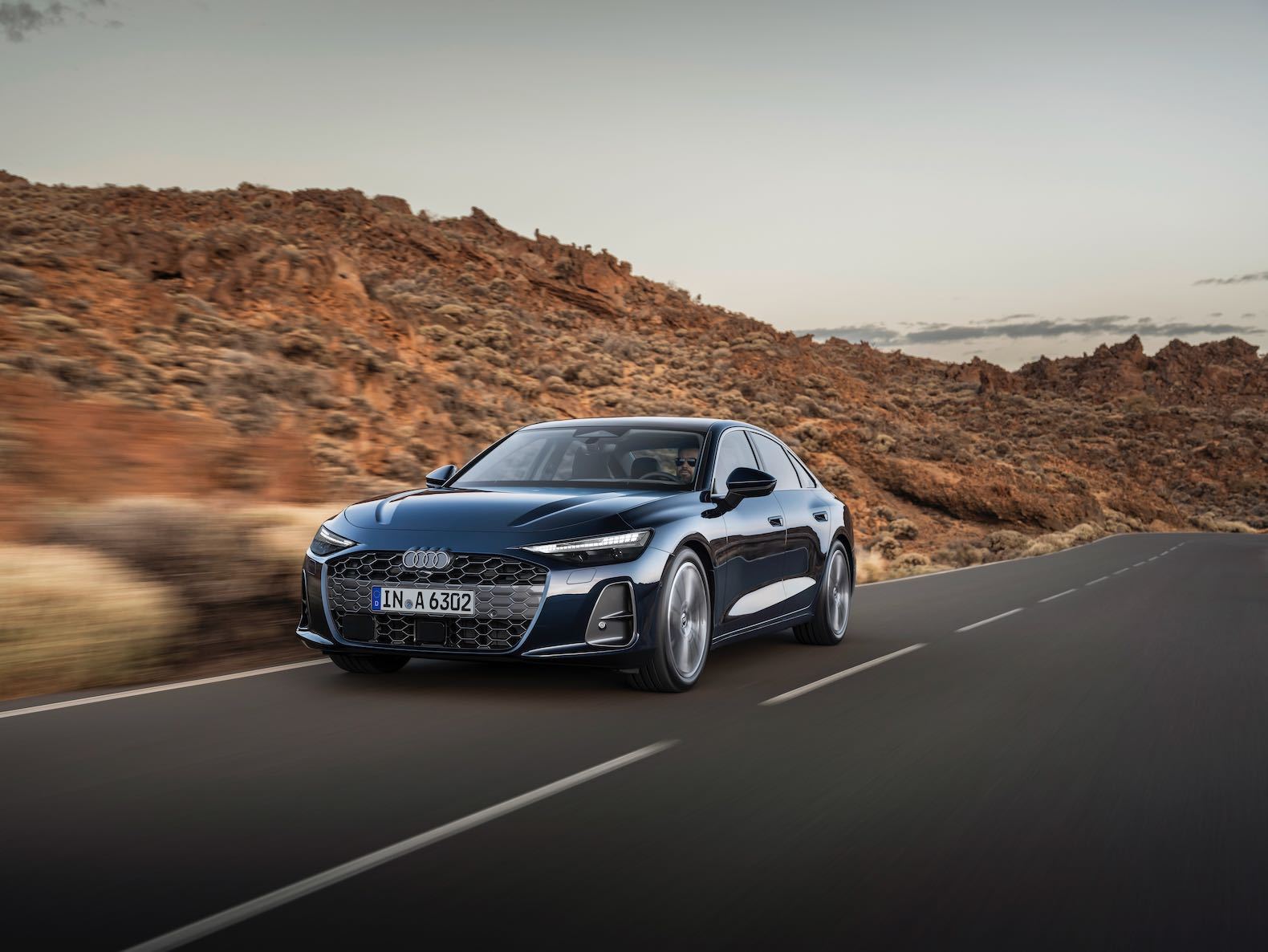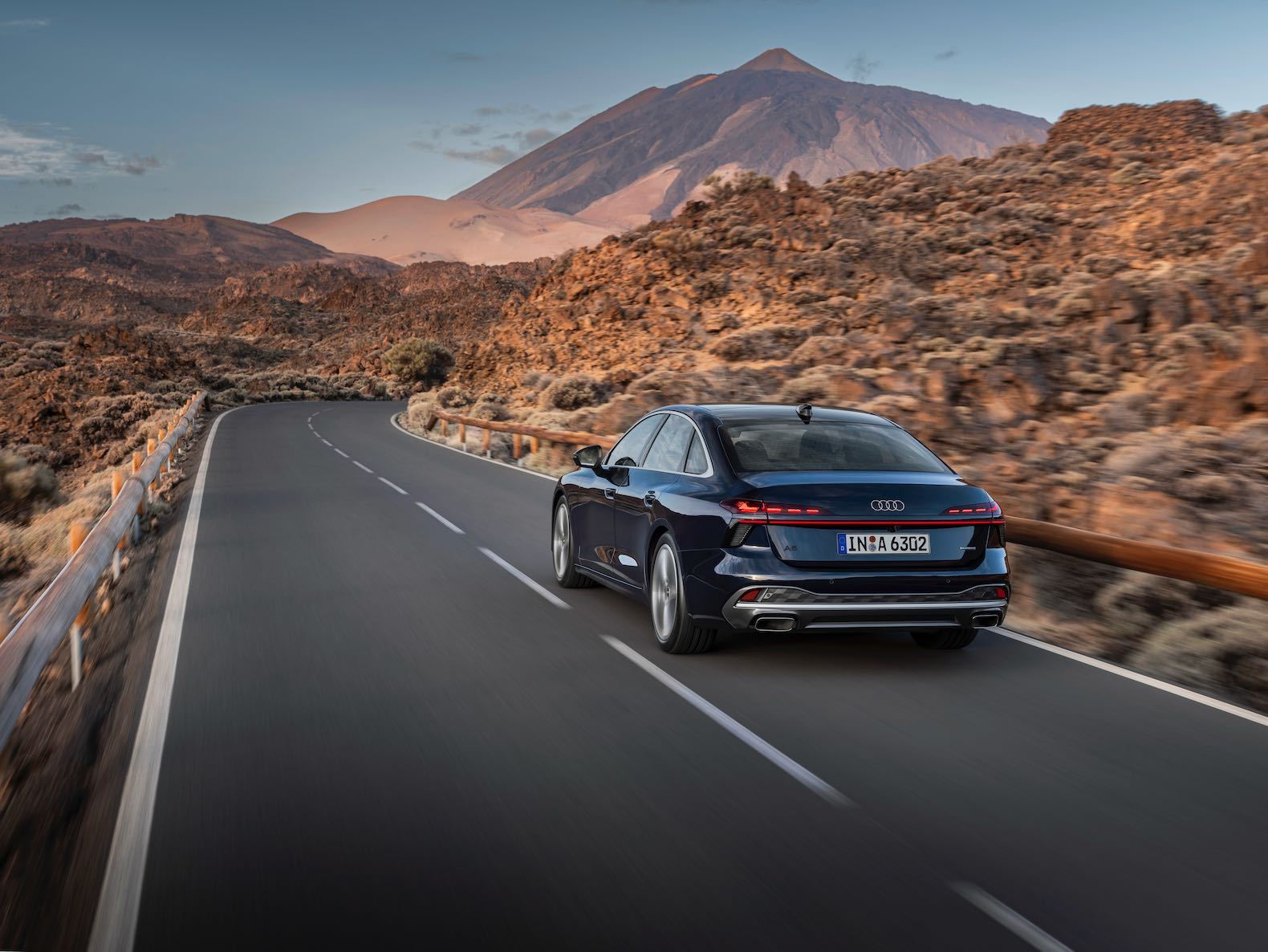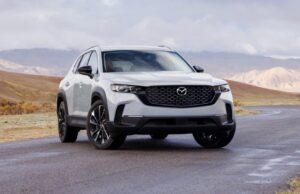Audi has revealed the all-new 2026 Audi A6 sedan, the gas-powered counterpart to the previously revealed A6 E-Tron EV.

Though the 2026 Audi A6 and the A6 E-Tron both look familiar, they are actually built on entirely different platforms, PPC (Premium Platform Combustion) and PPE (Premium Platform Electric), respectively.
From a design standpoint, Audi is still very much doing a “one-sausage-different-lengths” approach, with the 2026 Audi A6 looking like a larger version of the previously revealed A5 (formerly known as the A4 sedan). Though visually very similar, the 2026 Audi A6 is 1.5 inches wider and 2.5 inches longer and rides on a 0.9-inch shorter wheelbase than the E-Tron version. It also arrives as a true sedan with a trunk offering 17.37 cubic feet of storage space compared to the E-Trons fastback/hatch form.
The front of the 2026 Audi A6 features the current iteration of the brand’s hexagonal grille flanked by headlights capable of displaying a range of different lighting patterns. Notably, this headlight arrangement is different from the split headlight design of the E-Tron version. Also, as in other recent Audi models, the Audi badge itself has been placed at the very top of the grille. Aggressive air intakes on either side of the grille round out the relatively clean front-end styling of the new A6.

Moving to the profile, the 2026 Audi A6 features a more rounded, flowing design than that of the outgoing model. Distinct front and rear haunches give it a planted, sporty feel, while recessed door handles help smooth the sides to improve aerodynamic performance. Speaking of which, the 2026 Audi A6 is the most aerodynamically efficient gas-powered Audi ever created, with a drag coefficient of just 0.23 (the E-Tron rings in with an even slipperier 0.21 Cd). This impressive number is thanks to air curtains around the front wheels, active intakes in the grille, flatter underbody panels, and a front spoiler. Buyers will be able to choose from wheel options ranging from 21 to 23 inches in diameter.
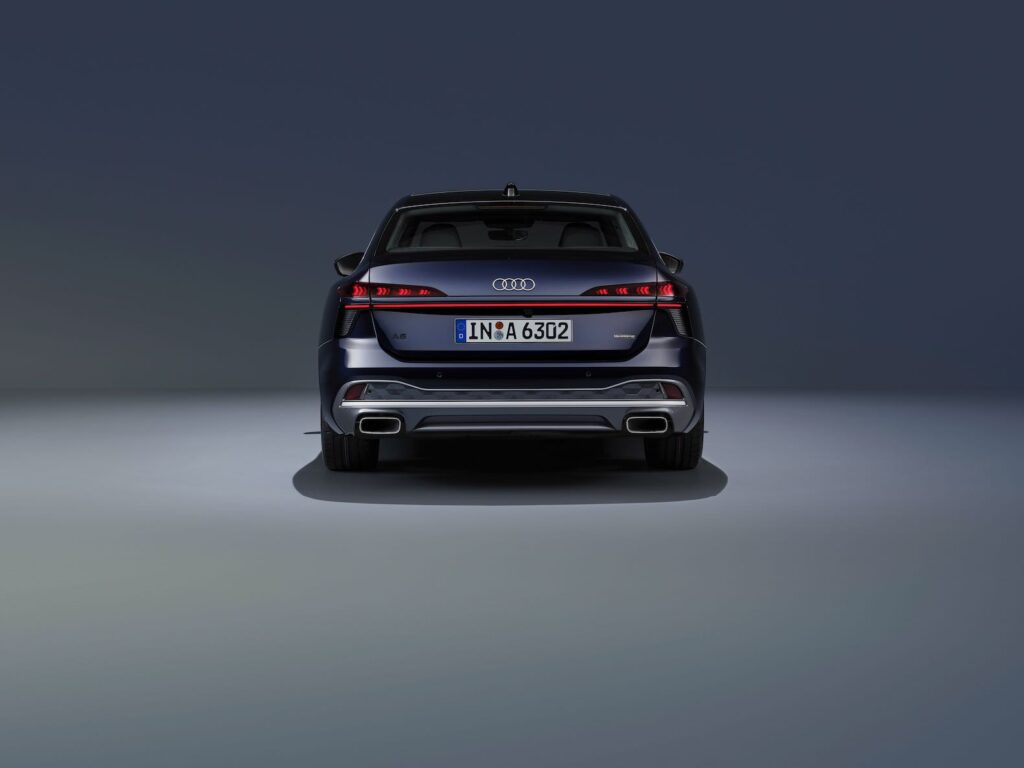
The rear of the 2026 Audi A6 features a full-width lightbar treatment with a thin LED strip connecting the two ends of the taillights, which feature distinct lighting signatures and small black winglets extending down into the rear bumper. The bumper itself features an interesting checkered flag-inspired pattern (at least on the model shown; other versions will likely have slightly different treatments) as well as a full-width brushed metal trim piece to accentuate the new A6’s width.
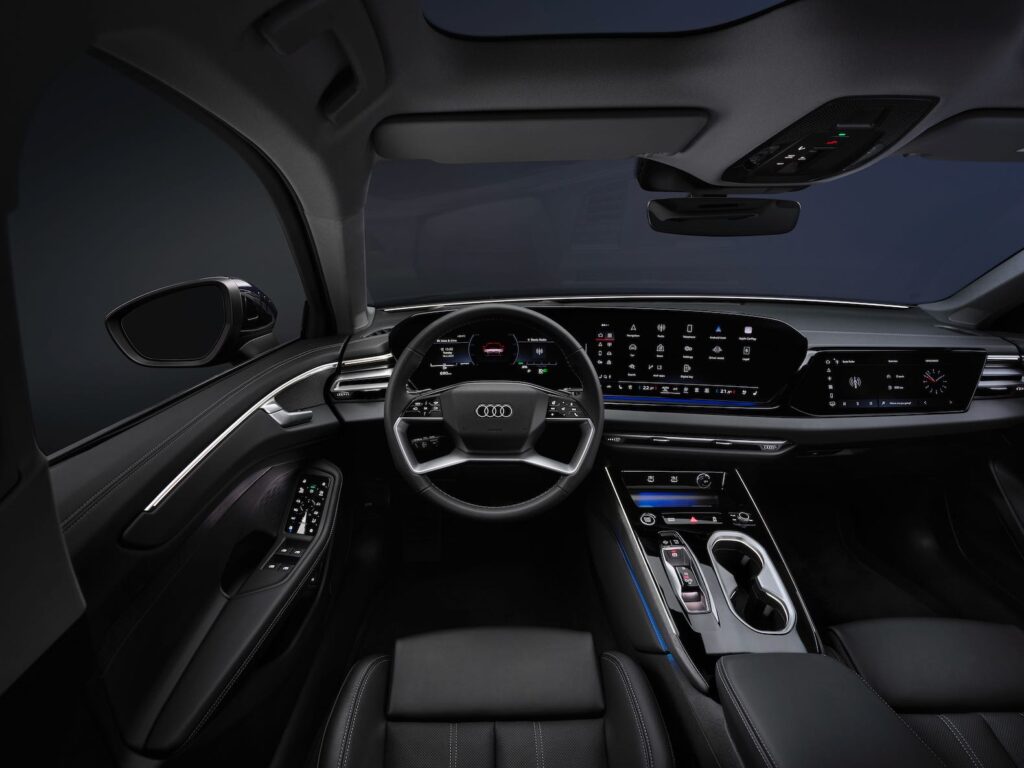
Like the exterior, the interior of the 2026 Audi A6 is very similar to that of other recent Audi models (and nearly identical to that of the A6 E-tron) with an upscale, tech-forward design. Two displays come standard on all models: an 11.9-inch driver display and a 14.5-inch central infotainment touchscreen, both mounted behind a single sweeping piece of glass. An optional 10.9-inch auxiliary display for the front seat passenger is also available, which actively blocks itself from the driver’s view to avoid unwanted distractions while in motion.
The 2026 Audi A6 also features improved sound insulation for the cabin, as well as sound-absorbing tires, resulting in a 30 percent reduction in interior noise.
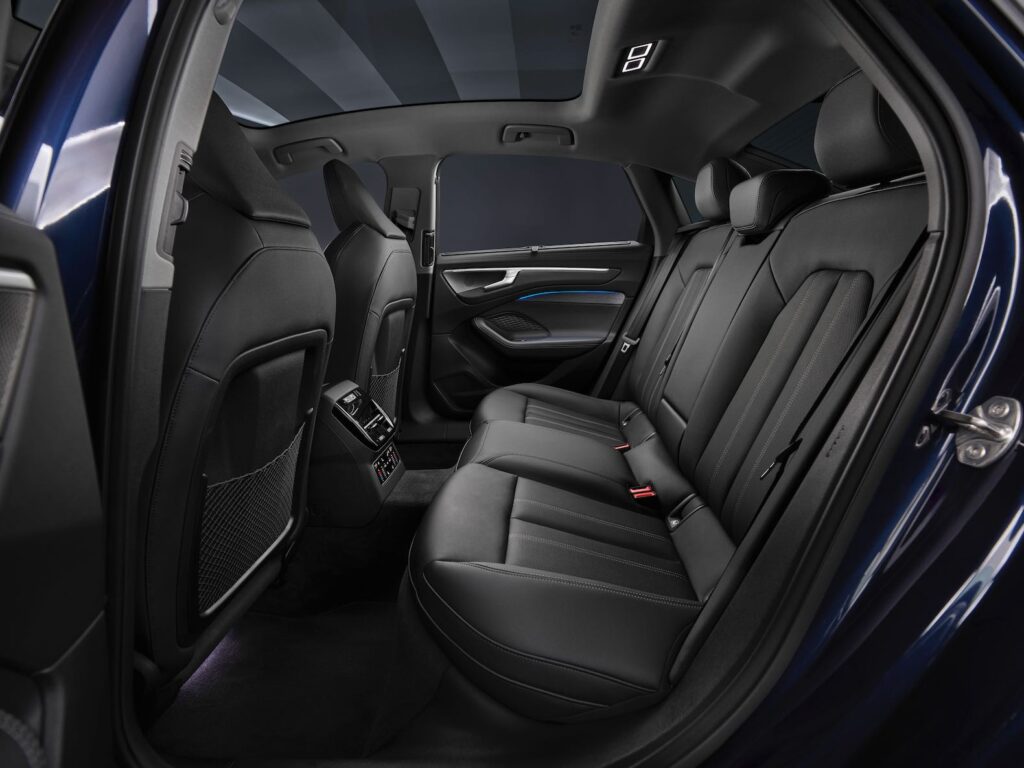
Available options include a 20-speaker Bang & Olufsen premium audio system, soft-close doors, four-zone automatic climate control, and a glass roof with the ability to switch from being transparent to opaque at the touch of a button.
Internationally, the 2026 Audi A6 will be offered with an assortment of engines, including gas, diesel, and hybrid variants. All US-bound models will arrive with a 3.0-liter turbo V6 making 362 hp paired with a seven-speed dual-clutch transmission and the brand’s ubiquitous Quattro AWD system. This powertrain will be able to propel the new A6 from 0-62 mph in a scant 4.7 seconds. Future models (like the S6 and RS6 versions) will bring even better performance. Options include an adaptive air suspension as well as four-wheel-steering to reduce its turning radius.
The 2026 Audi A6 will be available this month in Germany, with US market availability announced at a later date.

